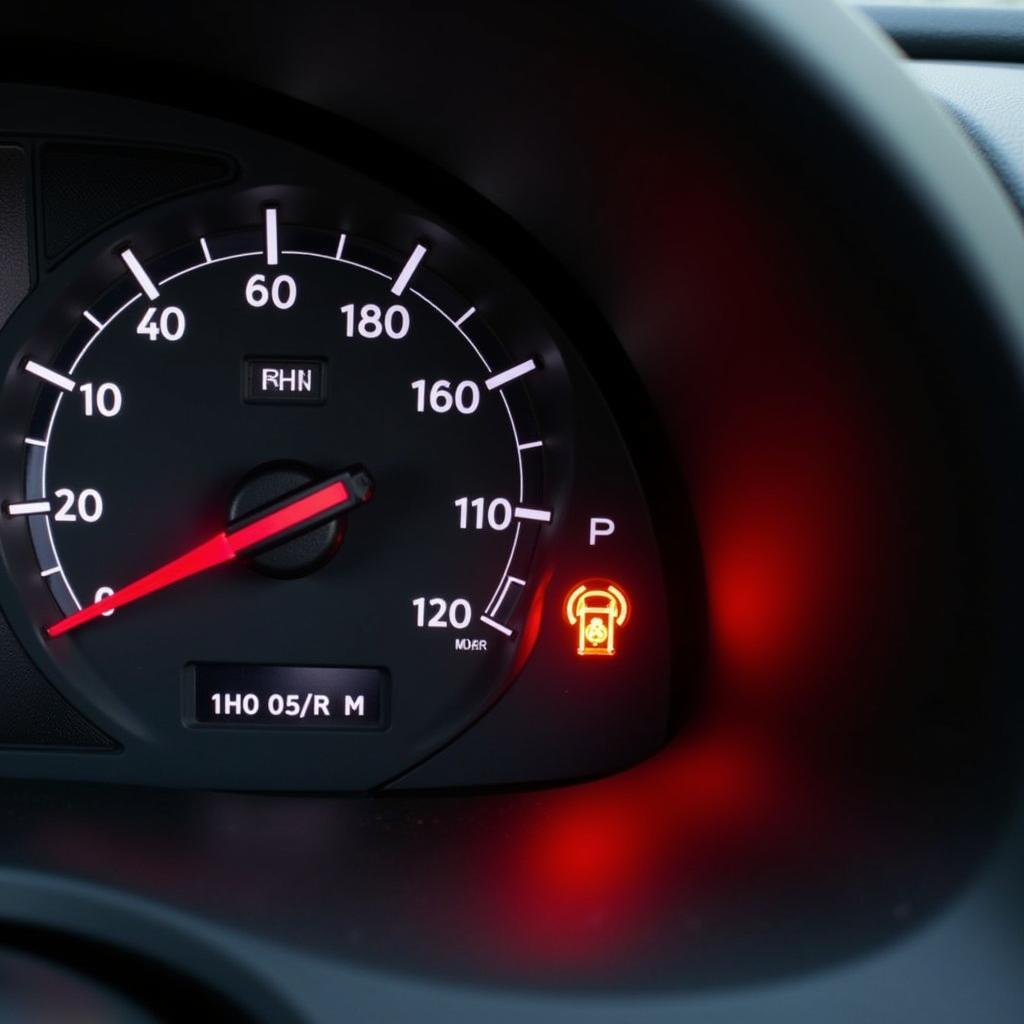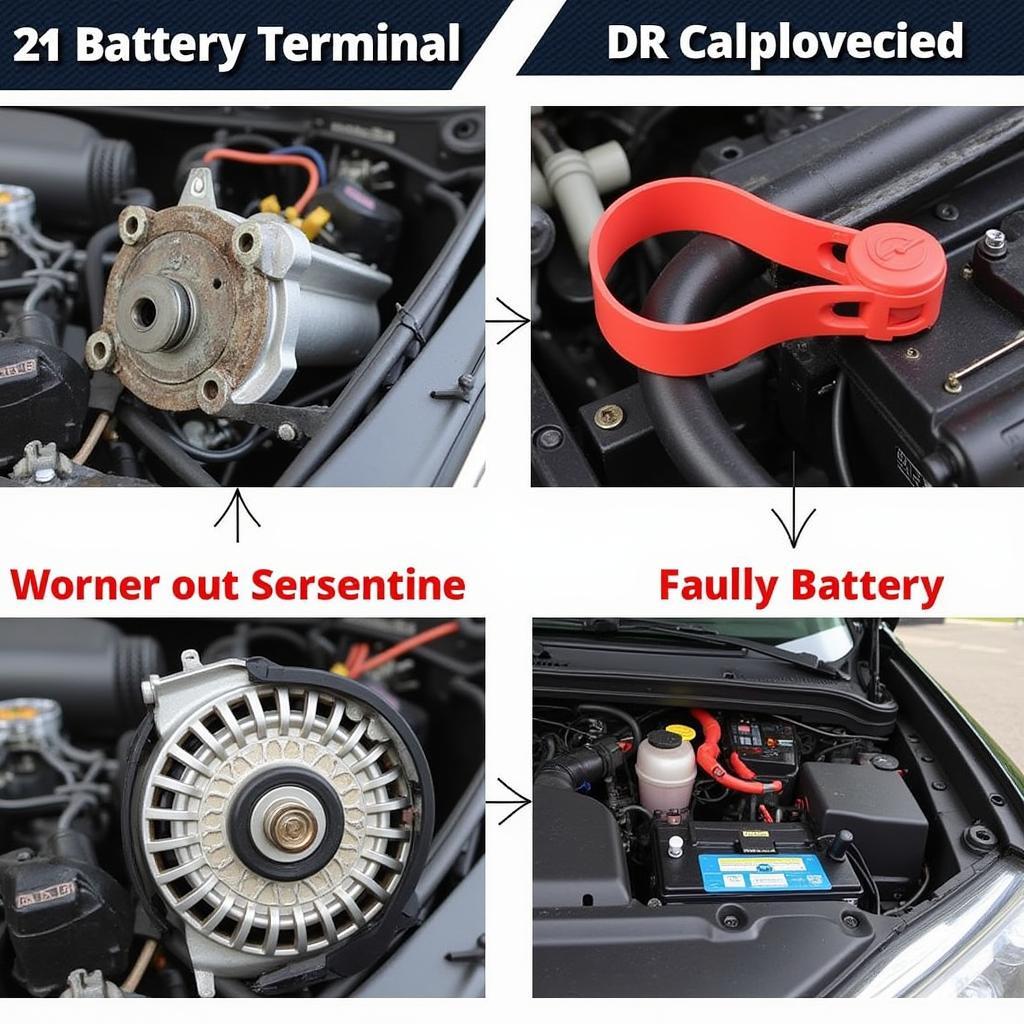That annoying beep, squeal, or chime emanating from your dashboard – it’s the dreaded brake warning indicator sound. Ignoring it isn’t an option; it’s your car’s way of saying something needs attention. This article delves into the intricacies of this auditory alarm, covering everything from common causes to diagnostic techniques and even remote software solutions for modern vehicles.
What Does the Brake Warning Indicator Sound Mean?
The brake warning indicator sound, often accompanied by a light on your dashboard, signals a potential problem within your braking system. This sound can vary from a high-pitched beep to a grinding noise, depending on the specific issue and vehicle make. While the exact sound might differ, the message is clear: your brakes require investigation.
This warning system is crucial for safety. Imagine driving down a steep hill only to find your brakes aren’t responding as they should. That’s a scenario the brake warning system is designed to prevent.
Common Causes of Brake Warning Indicator Sound
Several issues can trigger the brake warning indicator sound. Some of the most common culprits include:
- Worn Brake Pads: This is the most frequent reason for the warning. Brake pads have wear indicators that create the sound when they become too thin.
- Low Brake Fluid: A drop in brake fluid level often indicates a leak somewhere in the system, a serious safety concern.
- Faulty Brake Sensor: The sensor itself could malfunction, triggering the warning even if there’s no actual problem with the brakes.
- Parking Brake Engaged: Sometimes, the sound is simply a reminder that the parking brake is still on. While seemingly obvious, it’s an easily overlooked issue.
- ABS Issues: Problems with the Anti-lock Braking System (ABS) can also activate the warning.
Diagnosing the Problem
Identifying the root cause requires a systematic approach. Start by checking the parking brake. If it’s disengaged, inspect the brake fluid reservoir. Low fluid points to a leak, requiring professional attention. saab brake warning light problem Next, visually inspect the brake pads. If they appear thin, replacement is likely necessary.
For more complex issues like faulty sensors or ABS problems, diagnostic tools become essential. Modern vehicles utilize sophisticated onboard diagnostic systems. These systems generate codes that pinpoint the problem area, allowing for precise and efficient repairs.
Remote Diagnostics and Software Solutions
Advancements in automotive technology have paved the way for remote diagnostics and software solutions. Think of it as a virtual mechanic, capable of identifying and addressing certain brake system issues remotely.
This cutting-edge technology allows skilled technicians to access vehicle data from a distance, analyze error codes, and even perform software updates to rectify specific brake-related problems. This approach can save time and money, eliminating the need for a physical visit to a repair shop in certain instances.
“Remote diagnostics offer incredible efficiency,” says John Davis, Senior Automotive Systems Engineer at Advanced Auto Solutions. “We can often resolve brake warning light issues without the customer ever having to bring their car in.”
Why Ignoring the Brake Warning Sound is Dangerous
Ignoring the brake warning indicator sound can have serious consequences, jeopardizing your safety and potentially leading to costly repairs. A seemingly minor issue, like worn brake pads, can escalate to rotor damage and even brake failure if left unaddressed.
“Addressing brake issues promptly ensures safety and prevents further damage,” advises Sarah Miller, Lead Technician at BrakeTech Solutions. “Don’t wait until you experience a significant decrease in braking performance.”
Conclusion
The brake warning indicator sound serves as a vital safety alert, demanding immediate attention. Understanding its potential causes and employing appropriate diagnostic methods, including remote software solutions, is crucial for maintaining a safe and reliable vehicle. Don’t ignore this crucial warning; address it promptly to ensure your safety and prevent further damage.
FAQ
- What should I do if my brake warning light comes on? Pull over safely and assess the situation. Check the parking brake, brake fluid level, and visually inspect the brake pads. If the issue persists, seek professional assistance.
- Can I drive with the brake warning light on? It’s highly discouraged. The warning light signals a potential problem, and continuing to drive could jeopardize your safety.
- How much does it cost to fix a brake warning light issue? The cost varies depending on the underlying cause. Simple fixes like replacing brake pads are relatively inexpensive, while more complex issues like ABS repairs can be significantly more costly.
- How often should I check my brake fluid level? Checking your brake fluid level monthly is recommended.
- Can remote diagnostics fix all brake problems? No, remote diagnostics can address specific software-related issues, but physical inspection and repair are necessary for mechanical problems like leaks or worn components.
- What is the difference between the brake warning light and the ABS light? The brake warning light indicates a general brake system problem, while the ABS light specifically signals an issue with the Anti-lock Braking System.
- How can I prevent brake warning light issues? Regular brake inspections, timely brake pad replacements, and maintaining proper brake fluid levels can help prevent many brake warning light issues.



